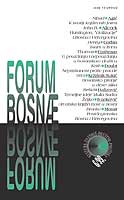
We kindly inform you that, as long as the subject affiliation of our 300.000+ articles is in progress, you might get unsufficient or no results on your third level or second level search. In this case, please broaden your search criteria.

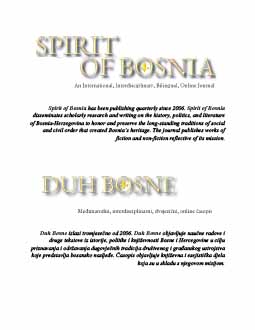

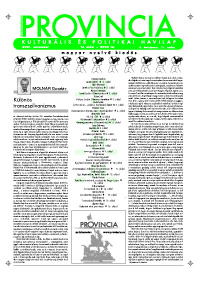
The democracy brings with it the long desired freedom of expression, which allows anybody to say anything about any issue. Among other things, about the Romania Catholicism, a theme very at hand, but yet so complicated and having serious implications in the history of universal church.
More...
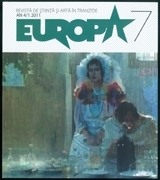
Starting with the second half of the 18th century, the “Land of Năsăud” had developed a specific, clearly-cut identity. It had a strong idea which was strengthened by the events occurred at the end of the century, as well as during the next one. The inhabitants of the region under survey had enjoyed the status of free men as early as the Middle Ages. So, the setting up of the second Romanian border regiment, whose main purpose was the improvement of their social, economic and cultural status, accelerated the process of particularization of the “Land of Năsăud” within the Transylvanian Principality. The majority of the region’s population was Romanian and followed the Orthodox religion. When Austrian government was set up here, Catholicism started to gain territory. Since the military was required here anyway it was also used to encourage the consolidation of the Greek-Catholic Church, Austrians decided to establish two Romanian border regiments, the second one having its headquarter in Năsăud. At the same time, the Romanian Greek-Catholic Church of Transylvania the first three vicarages were set up at he end of 18th century (Rodna, Făgăraş and Haţeg). The institution of the vicarage was superior to that of the protopope by authority, and played a major role not only in monitoring and defending the religious union, in training the clergy and the people, but also in "developing" the "United" Church by gaining new followers. This was the result of an original mixture of institutional parts from the Roman-Catholic, Orthodox and Calvinist Churches. The vicarage of Rodna was initially included within its boundaries 39 communities from 44 villages of the “Land of Năsăud” which established the second Romanian border regiment. After 1851, following the dissolution of the border regiment system, nine parishes were separated from the vicarage. This illustrated the intention of the high church authorities to make religious administration more efficient. So, they established Budacul Român which remained in a subordinate jurisdictional-ecclesiastic position to the vicarage of Rodna.
More...
Generally, on the religious, dogmatic plan, there are no considerable differences between Eastern and Western Christians, but there are differences as far as Esoterian essence is concerned. Eastern and Western Christians ask different questions. Catholics and Protestants sometimes give different answers to the same questions, and the Eastern Christians give the same answers by asking different questions. In the spiritual experience, Eastern Christians are focused on the mind (metánoia), and adoration (théosis, deificatio); Western Christians are focused on speaking and conversion. Eastern theology is focused on cosmic, ontological, and triadological questions; Western on anthropological, soteriological and ethical. Eastern theology inclines towards mysticism and esotery; Western towards moral and legal. The Eastern theology is rhetorical and poetic; Western intellectual and scholastic. The Eastern priest is sophisticated and wise; the Western priest is a lower and a judge. The Eastern talks, the Western proves. The Eastern liturgy resembles a celebration, it is dramatical; the Western is transparent and logical. Different religious styles of the Eastern and Western Christians are more complementary than opposed. This is the conclusion of comparative dogma and the wisdom of the ecumenist movement.
More...
In spite of the political communism’s fall and of exposing its criminal character, theoretically and practically alike, after 1989 we were witnesses to no real evaluation, with concrete consequences, of a regime which made over one hundred million victims in the entire world. The condemnation of communism was made only in the form of some timid initiatives or some political declarations, without any practical results. This situation confirms the fact that, more than two decades after the transition from totalitarianism to democracy in Eastern Europe, the communism continues to represent an unsolved ethical dilemma. The present study reviews the initiatives at a European level regarding the eventual condemnation of communism.
More...
In the contemporary society, in public discourse, as well as in relatively popular intellectual polemics on religion, there is a privileged viewpoint – the national character of Christian Orthodox confession. It may refer to the exterior – and be viewed from a descriptive perspective, or praised or critiqued, but nobody is nationalizing it. Starting with this sociological fact, it is our aim to briefly explain the birth of this national consciousness. In this case, the genesis itself will offer clarification of arguable sociologic facts: today, Orthodoxy manifests itself in a contemporary way by means of national Orthodoxy, named Orthodoxism.
More...
Besides the presentation of the native language characteristics of the Slavic manuscript Miscelaneul de la Praga (of XIV-XVth century, Hodoş-Bodrog Monastery) that could be established, with more or less approximation, the period and the origin of the writer or the linguistic area where the work was copied, this manuscript could be analyzed from its content point of view, as well. In this case, we would have an interdisciplinary approach of lecebnic, and the information about the folk medicine that we can find there could make a background for a presentation of the folk believes about illness and their remedies in the Medieval Age. That would be one of the common elements and the starting point for a comparative estimation of the folk medicine fragments of Miscelaneul de la Praga (The Slavonic Book of Prague) and Sbornicul medical de la Variaş (The Medical Book of Variaş, XVII-XIXth century ). Much more than that, in both of them we can find magic and symbolic formula and practices of driving away the illness that have a direct relation with the magic medicine. So far, all these facts could be relevant for the magic thought and vision of the south-east European folk culture and tradition.
More...
The year 1805. is considered the beginning of the modern ecumenism. That year the missioner Baptist William Kerry dedicated himself to establishing a general society of all Christian communities all over the world. His suggestion was accepted by many missionaries and religious encounters were initiated. The ever serious conflicts between missionaries as well as prozelitism seized, and in time missionaries became closer. Consequently, many disputes were overcome. In a word – ecumenical consciousness was born.
More...
he history of the confessional life of Romanians in the western part of Banat, which is now an integral part of the Autonomous Province of Vojvodina, was marked by the dominant role of the orthodox church, present with the population on this territory since the earliest times. Up until the acquisition of the clerical independence in 1864, the Romanian orthodox adherents from this territory were administratively under the authority of the Serbian Orthodox Church. With the creation of the independent Romanian Othodox Church within the Habsburg Monarchy, the Romanian parish from the present Serbian Banat became a part of the Caransebeş and Arad dioceses. In the 19th century, because of the discontent by the behaviour of priests and the state of affairs in the orthodox church, a part of adherents converted to Greek Catholicism, and at the end of the 19th and beginning of the 20th century, in the majority of places with Romanian population, Neo-protestant communities emerged.
More...
This work takes in consideration the historical facts and the Orthodox missionary activity of the reverent Nicodim from Tisman (1310-1406), a saint praized by both Srebian and Romanian church.
More...
In his book „Our Postmodern Modern” Wolfgang Welsch determines the development and characteristics of Postmodern in different spiritual fields: architecture, literature, philosophy, sociology… What these different genealogies express is the divergence in the definition of the term postmodern, which, at the same time, represents one of its most important characteristics – plurality of meaning flourishing under the concept of a particular age, genre, idea, philosophy, movement…named postmodern.
More...
Western esotericism as a clearly circumscribed field of scientific enquiry is a relatively recent achievement. Consequently scholarly debates regarding an academically rigorous definition of esotericism as well as the most pertinent methodological approaches to this domain are far from being settled. This brief study attempts a survey of the most important contributions to this area of research.
More...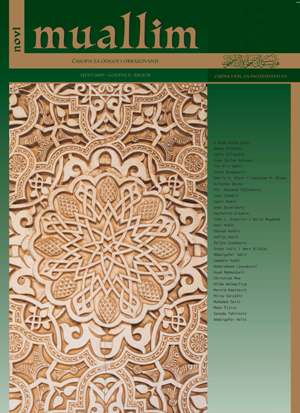
Hutba is a brief, specific discourse with a current message. A brief speech demands serious preparation if the speaker wishes to deliver a meaningful message. In attempting to say as much as possible, the speaker can go overboard, and the message of his speech can be the opposite of what he intends to say. Speaking is a skill and an honour, one which includes responsibility for what is delivered. A hutba should not be delivered in a loud voice, especially if there is a public address system in the mosque. If you wish to be heard, you muct speak in a low voice. This error is especially noticeable among the young hatibs. It is important to introduce public speaking into our madrasas as a mandatory subject, so that we may adequately meet the requirements of this honourable vocation and correctly prepare our students. The author of “Reflection on Hutbas” is of the opinion that it would be useful if the Riyaset of the Islamic Community issued a binding decision that hutbas in our jamats (congregations) speaking in the Bosnian language must not exceed the time limit of ten minutes. Furthermore, hatibs should not appear on the minber (pulpit) without proper religious attire. It would also be helpful if the Riyaset formed a Committee for attending hutbas in Bosnia and Herzegovina, and at the end of the Hijra year publicly announced the best hatib who would then be given the honour of delivering his hutba from the minber of Bey Mosque in Sarajevo. The author was prompted to write this contribution, along with some explanations and suggestions, by texts on hutbas published in New Muallim, issue 37.
More...
Fatwa is a Sharia-judicial solution, in other words, a response to a question, and is one of the oldest and most important Islamic judicial institutions. To issue a fatwa means to offer explanations and instructions for life in accordance with the ordinances of Allah. After Prophet Muhammad s.a.w.s. the issuing of fatwas gradually became institutionalized. This institutionalization, in turn, meant constant evolution of Sharia law and the interpretation of this law in a specific time and place. But the changing of fatwas to correspond with changes in time and place is a subject for Islamic Fiqh scholars, as satisfying the needs of modern Muslims means that certain traditional norms of Sharia law must be amended. In this article, the author examines some of these issues, including the development of fatwa as an institution, the form of fatwa, the differences between a fatwa and a court ruling, the possiblity of changing a fatwa, and the conditions needed for someone to become a mufti.
More...
The New Muallim publishes hutbas (sermons) of active imams and hatibs (imams delivering the hutba). There are reviews along with the hutbas, so that together they make a whole. The reviews are written by those who listen to hutbas. The reviews are not intended to be valorizing; rather, they aim to improve upon the hutba, analyzing it as a public statement by an imam and critically evaluating the statement. The reviewers react at those aspects which they consider important for a hutba (its length, quality, message, presentation, literacy level, formulation, etc.). This issue features two hutbas: 1. Shame is Part of Faith by Abdulgafar Velić and 2. Pleasant Discourse: the Discourse of Guidance by hatib Muhamed Šarić. The reviews are written by Adbulgaraf Jukić and Izet ef. Čamidžić.
More...
This work briefly describes the life and works of Hans Küng, specifically referring to the development of Küng’s work “Global Ethic Project”. This particular project is based on Hans Küng’s well-known maxim: “No peace among the nations without peace among the religions; no peace among the religions without dialogue between the religions; no dialogue between the religions without investigation of the foundations of the religions.” Küng wished his Global Ethical Project to extol the dignity and the survival of every man and to be a link among people inviting them to religious dialogue and thence to world peace. The significance of the Global Ethic Project is undoubtedly its invitation to global peace through peace among religions, with an emphasis on what is common to all religions – namely, love toward man.
More...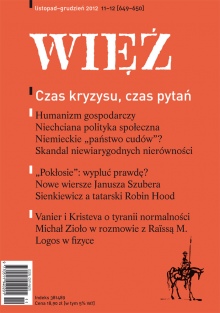
Z długiego terminowania u profesora Czesława M. pozostało mi to jedno najważniejsze pytanie i ta jedna najważniejsza odpowiedź: „Dlaczego teologia? Bo pierwsze ma być pierwsze”. Poganiam więc siebie niecierpliwie, bo moje życie dawno minęło depresyjny półmetek. Po raz ostatni muszę pójść do szkoły, gdzie uczą tego „pierwszego”. Idę do szkoły, bo tak nakazuje wniosek z rachunku sumienia, który nazywa się postanowieniem poprawy. A jest co poprawiać, bo przyznaję – pierwsze nie było pierwsze. Uświadomiłem sobie to zaniedbanie, otwierając Dziennik Raissy Maritain, ascetyczne, pozbawione ornamentów, pisarskiego fałszu (a fałsz frazy zdradza fałszywe wnętrze) i kamuflażu noty z podróży jej ducha w stronę Boga, albo jeszcze dokładniej – opis operacji przechodzenia ze strefy demarkacyjnej na stronę Boga. Uśmiecham się gorzko, bo przecież długo zamieszkiwałem wraz z innymi tę strefę, strefę niczyją, strefę wiecznej tymczasowości i pracowitego oszustwa, bo byłem pracowity, prawie wzór cnót, pożerający książki i wiecznie z poczynionych odkryć niezadowolony, obłożony komentarzami do komentarzy, próbujący z męczeńską miną wsłuchać się w muzykę grających jednocześnie stu fortepianów. Godziłem się nazywać tę moją przypadłość kompleksem, robotniczo-chłopską zawziętością, próbującą nadrobić braki wynikłe z uczestniczenia w szczęśliwym systemie, ba, godziłem się nawet na klasyfikowanie jej w rubrykach teologii moralnej pod nazwą „obżarstwo duchowe”, tymczasem choroba była śmiertelna i zakaźna. I nie było to tylko nieumiłowanie prawdy, nie mogę sądzić się aż tak okrutnie. To był zwykły strach przed ostatecznym zaangażowaniem się, cierpieniem z powodu życia prawdą. Była w tej postawie balansująca na krawędzi oszustwa niedorosłość: „U studentów częściej zauważa się zainteresowanie prawdą niż umiłowanie prawdy. Dowiedzieć się wszystko jedno czego, dowiedzieć się jak najwięcej. Ten, kto kocha prawdę, usiłuje zdobyć wiedzę o przyczynach pierwotnych, wiedzę ostateczną, poza którą wyjść już nie można. Kimże jest człowiek niekochający prawdy?” (Raissa Maritain, Dziennik, s. 84). Odpowiem na to pytanie. Jest to człowiek wyczekujący, zawieszający miłość i spotkanie z innym i Innym na czas nieokreślony, człowiek, który mówi: „Jeszcze nie dziś, może jutro, najpewniej pojutrze”. Bo, oczywiście, w imię swoiście pojętej duchowej uczciwości, musi poczynić pewne niezbędne przygotowania: „Osoby, które nie chcą przystąpić do modlitwy przed osiągnięciem wszystkich cnot, podobne są do małego ziarna, które nie chce wpaść w ziemię, zanim nie wypuści korzenia, łodygi i liści” (Raissa Maritain, Dziennik, s. 34).
More...